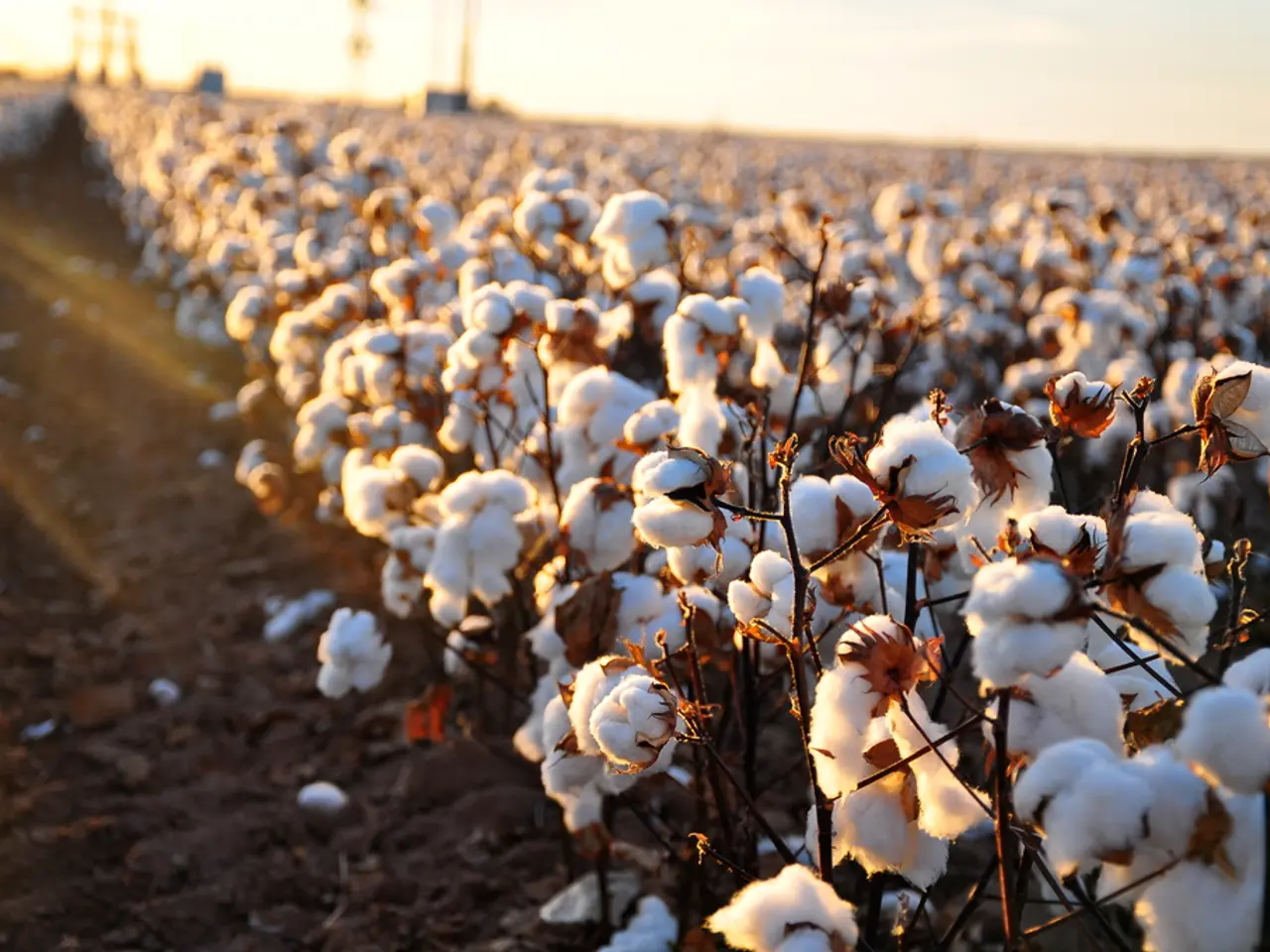Navigating Tough Soil: Growing Plants under Harsh Agricultural Circumstances
In the quest for sustainable agriculture and gardening, understanding the unique properties of different soil types is crucial. Here's a breakdown of strategies to improve soil health for six common soil types: sand, clay, silt, chalk, peat, and loam.
Sandy Soil (Light, Large Particles, Drains Quickly but Poor Nutrient Retention)
To improve nutrient and water retention in sandy soil, consider adding organic matter such as compost, manure, or cover crops. Mulch can also be used to reduce evaporation and protect soil structure. Crop rotation with legumes can increase nitrogen content, benefiting the soil.
Clay Soil (Heavy, Fine Particles, Retains Water but Drains Poorly)
Incorporating organic matter can improve drainage and aeration in clay soil. Deep-rooted cover crops can help break up compacted layers. Avoid over-tilling to prevent soil compaction and structure damage.
Silt Soil (Smooth, Retains Water Better than Sand but Drains More than Clay)
Maintaining organic matter levels is crucial in silt soil to prevent erosion and nutrient loss. Crop rotation and cover cropping can enhance soil structure and nutrient cycling. No-till or reduced-till farming minimises disturbance.
Chalk Soil (High pH Alkaline Soil, Often Stony with Poor Nutrient Availability)
Adding organic matter can increase nutrient retention and improve structure in chalk soil. If necessary, amendments such as sulfur or acidifying fertilizers can be applied to moderate pH. Select crops tolerant of alkaline conditions and use cover crops suited for such soils.
Peat Soil (High Organic Content, Very Fertile but Can be Acidic and Poorly Drained)
Ensure proper drainage to prevent waterlogging in peat soil. Use liming to adjust acidity if necessary. Add minerals or balanced fertilizers to supply nutrients not abundant in peat. Avoid excessive tillage to preserve organic matter.
Loam Soil (Balanced Mixture of Sand, Silt, and Clay, Generally Most Fertile)
Maintain organic matter via cover crops and compost applications in loam soil. Use crop rotation to sustain nutrient balance and reduce pests/diseases. Employ conservation tillage practices to protect soil structure.
Key cross-cutting strategies effective across soil types include the use of cover crops to protect against erosion, improve organic matter, and enhance nutrient cycling; crop rotation to reduce pests and improve soil biodiversity; and reduced or no-till farming to maintain soil structure and microbial health. Conservation agriculture and regenerative practices also play significant roles in building healthier, more resilient soils suited for sustainable agriculture.
Additional Considerations
- Peaty soils have high soil organic carbon content. The use of peat moss as a soil amendment is being phased out in some places due to its environmental impact.
- Chalky soils can dry out quickly in the summer. The depth of chalky soils may vary, but they are typically less than 30cm deep. Younger, smaller plants tend to establish more quickly and easily in chalky soils than larger, more mature specimens. Chalky soils are prone to drought, especially limestone soils.
- Silty soils are prone to soil erosion and compaction. Harvesting peat moss destroys peatlands and contributes to climate change by releasing stored carbon. Mulch around plant crowns can help retain moisture in chalky soils. Chalky soils with more clay are stickier and more challenging to work with. Silty soils are also prone to soil erosion due to their fine particles and low organic matter content.
- Approximately 15% of global peatlands have been drained for farming, forestry, and extractive industries. Extra watering may be necessary in chalky soils.
[1] Conservation Agriculture for Sustainable Soil Health. (n.d.). Retrieved from https://www.fao.org/agriculture/agriculture-knowledge-sharing/events/details/en/c/1306262/ [2] Sustainable Soil Management. (n.d.). Retrieved from https://www.unep.org/resources/report/sustainable-soil-management [3] The Importance of Soil Health. (n.d.). Retrieved from https://www.nrcs.usda.gov/wps/portal/nrcs/main/nrcs/soils/health/ [4] Soil Health and Regenerative Agriculture. (n.d.). Retrieved from https://rodaleinstitute.org/research/soil-health/ [5] Regenerative Agriculture and Food Systems. (n.d.). Retrieved from https://www.fao.org/3/a-i7948e.pdf
- In the realm of lifestyle and fashion-and-beauty products, choosing products made from sustainably sourced materials can contribute to environmental science by lowering the carbon footprint associated with those industries.
- The environmental science behind home-and-garden practices urges gardeners to opt for native plants and those tolerant of local soil types in their gardening efforts, such as utilizing plants suitable for chalk, peat, or silt soil.
- Understanding the implications of climate-change on environmental-science, including the role of soil health in carbon sequestration, encourages gardeners to implement regenerative practices to promote soil health, like the use of cover crops and reduced tillage, thereby contributing to the global efforts against climate-change.




